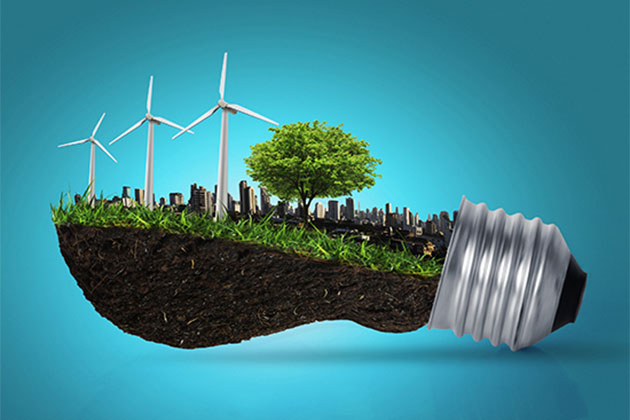Scientists have shown a new technology in which bioengineered bacteria can make cost-effective chemicals/polymers from renewable anlegg kilder
lignin is a material which is a constituent of cell wall of all dry land plants. It is the second most abundant natural polymer after cellulose. This material is the only polymer found in plants which is not composed of carbohydrate (sukker) monomers. Lignocellulose biopolymers provide shape, stability, strength and rigidity to plants. Lignocellulose biopolymers consist of three main components: cellulose and hemicellulose form a framework in which lignin is incorporated as a kind of connector thus solidifying the cell wall. Cell wall lignification makes plants resistant to wind and pests and helps them from rotting. Lignin is a vast but very underutilized renewable resource of energy. Lignin which represents up to 30 percent of the lignocellulose biomass is an unexploited treasure – at least from a chemical point of view. The chemical industry depends mostly on carbon compounds for creating different products like paint, artificial fibres, fertilizers and most importantly plastic. This industry does use some renewable resources like vegetable oil, starch, cellulose etc but this comprises only 13 percent of all compounds.
Lignin, et lovende alternativ til petroleum for å lage produkter
In fact, lignin is the one and only source of renewable on earth that contains a large number of aromatic compounds. This is of importance because aromatic compounds are generally extracted from the non-renewable source petroleum and then are used to produce plast, paints etc. Thus, the potential of lignin is very high. In comparison to petroleum which is a non-renewable fossil fuel, lignocelluloses are derived from tre, straw or Miscanthus which are renewable sources. Lignin can be grown in fields and forests and are generally neutral towards the climate. Lignocelluloses is being considered as a serious alternative to petroleum in past few decades. Petroleum drives the chemical industry at present. Petroleum is a raw material for many basic chemicals which are then used to produce useful products. But petroleum is non-renewable source and is dwindling, therefore focus needs to be on finding renewable sources. This brings lignin into the picture as appears to be a very promising alternative.
Lignin er full av høy energi, men å hente denne energien er komplisert og en kostbar prosess, og dermed til og med biodrivstoff som genereres, da sluttresultatet generelt sett er svært høye kostnader og ikke økonomisk kan erstatte "transportenergi" som er i bruk. Mange tilnærminger har blitt forsket på for å utvikle kostnadseffektive måter å bryte ned lignin og omdanne det til verdifulle kjemikalier. Imidlertid har flere begrensninger begrenset konvertering av et berøringsplantemateriale som lignin til å brukes som en alternativ energikilde eller til og med prøve å gjøre det mer kostnadseffektivt. En fersk studie har vellykket konstruert bakterier (E. Coli) til å fungere som en effektiv og produktiv biokonverteringscellefabrikk. Bakterier vokser og formerer seg veldig raskt, og de er i stand til å motstå tøffe industrielle prosesser. Denne informasjonen ble kombinert med forståelse av naturlig tilgjengelige lignin-nedbrytere. Verket ble publisert i Proceedings of the National Academy of Science USA.
The team of researchers led by Dr Seema Singh at the Sandia National Laboratories solved three main problems that are encountered in turning lignin into platform chemicals. The first major hurdle is that bakterie E.Coli generally does not produce the enzymes which are needed for conversion. Scientists tend to solve this problem of making enzymes by adding an “inducer” to the fermentation ring. These inducers are effective but are very expensive and thus do not fit well in the concept of biorefineries. Researchers tried a concept wherein a lignin derived compound like vanilla was used as a substrate as well as an inducer by engineering the bakterie E.Coli. This would bypass the need for an expensive inducer. Though, as the group discovered, vanilla wasn’t a good choice particularly because once lignin breaks down, vanilla is produced in large quantities and it starts inhibiting the function of E.Coli i.e. vanilla starts creating toxicity. But this worked in their favour when they engineered the bakterie. In the new scenario, the very chemical that is toxic to the E.Coli is used to initiate the complex process of “lignin valorisation”. Once vanilla is present, it activates the enzymes and bacteria starts to convert vanillin into catechol, which is the desired chemical. Also, the amount of vanillin never reaches the toxic level as it gets autoregulated in the current system. The third and final problem was of the efficiency. The system of conversion was slow and passive thus researchers looked into more effective transporters from other bacteria and engineered them into E. Coli which then fast tracked the process. Overcoming toxicity and efficiency problems by such innovative solutions can help make the production of biofuel a more economical process. And, removal of an external inducer along with incorporation of auto-regulation can further optimize the biofuel-making process.
Det er veletablert at når lignin er brutt ned, har det evnen til å gi eller snarere "gi til" verdifulle plattformkjemikalier som deretter kan omdannes til nylon, plast, farmasøytiske produkter og andre viktige produkter som i dag er avledet fra petroleum, en ikke - fornybar energikilde. Denne studien er relevant for å være et skritt mot å forske og utvikle kostnadseffektive løsninger for biodrivstoff og bioproduksjon. Ved å bruke bioingeniørteknologi kan vi produsere større mengder plattformkjemikalier og flere andre nye sluttprodukter, ikke bare med bakteriell E.Coli, men også med andre mikrobielle verter. Forfatteres fremtidige forskning skal fokusere på å demonstrere en økonomisk produksjon av disse produktene. Denne forskningen har en enorm innvirkning på energigenereringsprosesser og utvidelse av mulighetene for grønne produkter. Forfatterne bemerker at i nær fremtid bør lignocellulose definitivt komplementere petroleum hvis ikke erstatte det.
***
{Du kan lese den originale forskningsoppgaven ved å klikke på DOI-lenken nedenfor i listen over siterte kilder}
Source (s)
Wu W et al. 2018. Mot engineering av E. coli med et autoregulatorisk system for ligninvalorisering', Proceedings of National Academy of Sciences. 115 (12). https://doi.org/10.1073/pnas.1720129115






































